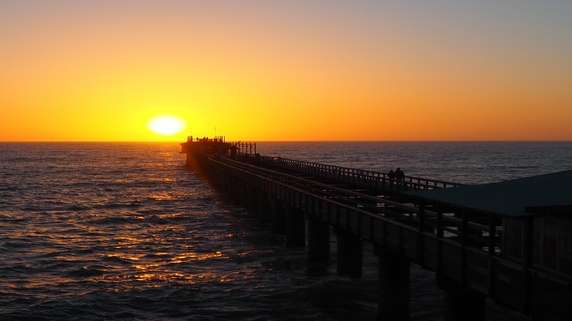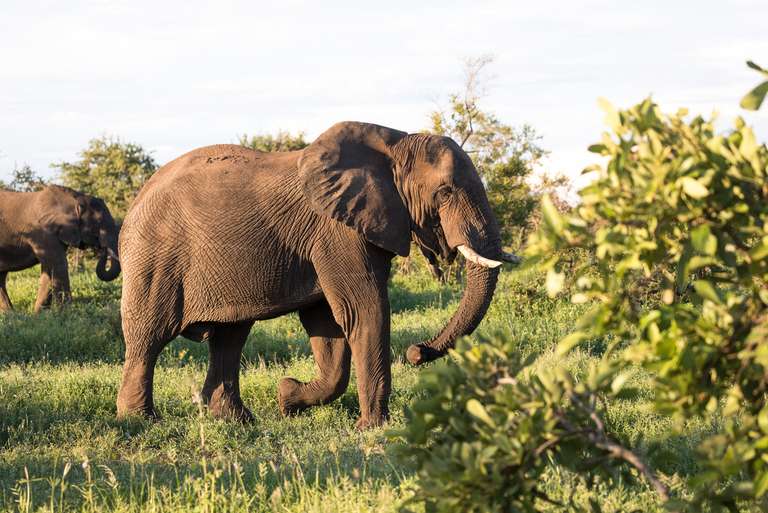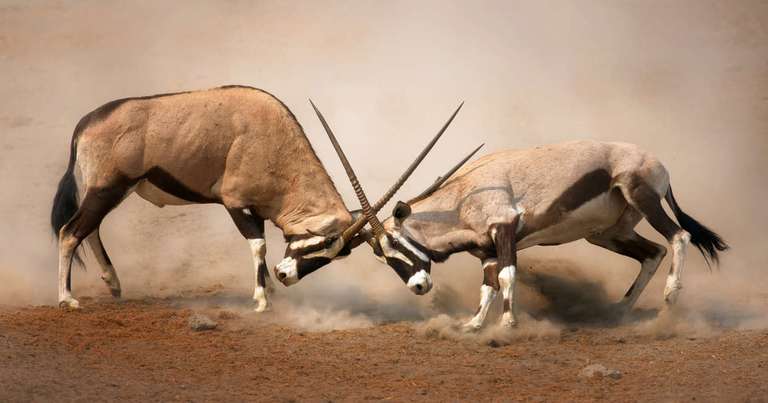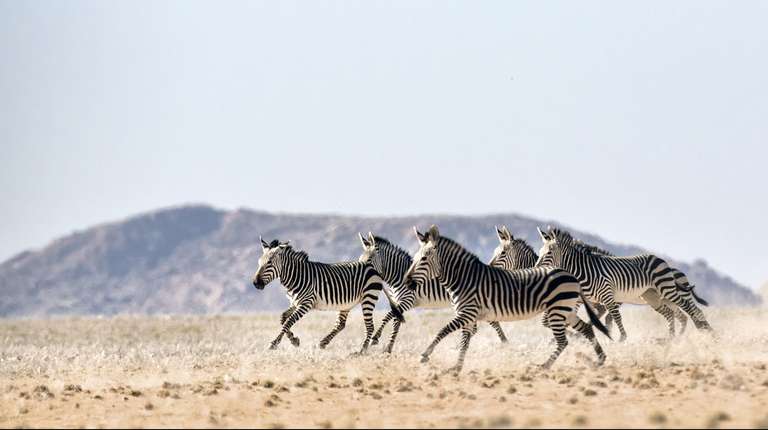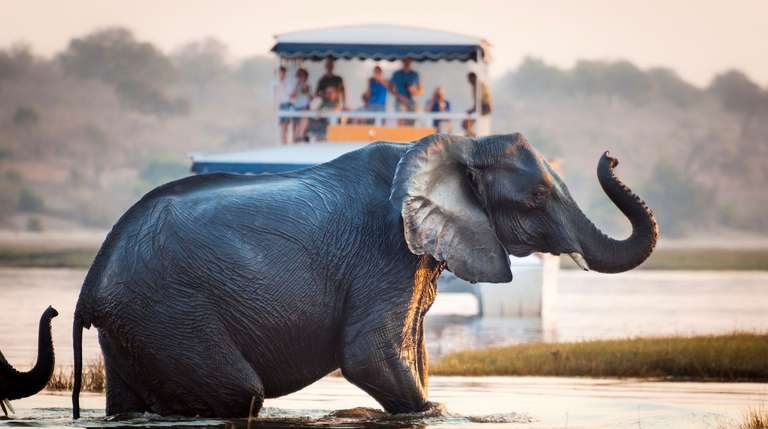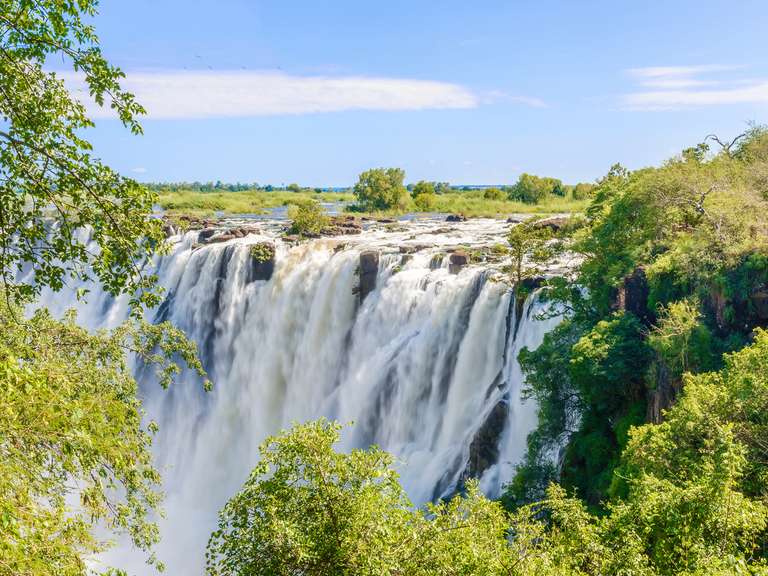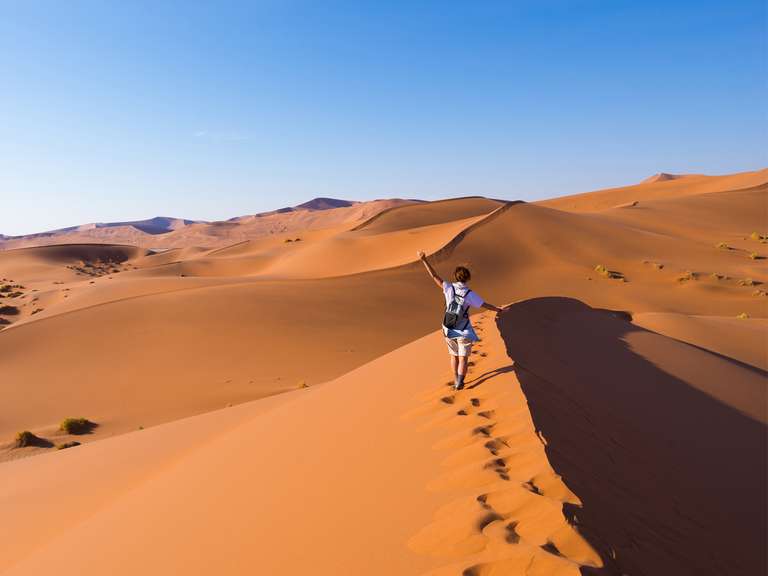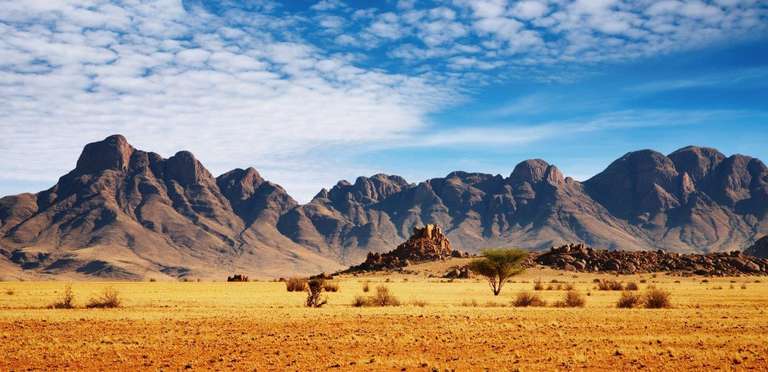Highlights
Swakopmund & Skeleton Coast
Walvis Bay Lagoon
Tropic of Capricorn
Sossusvlei, Namib Desert
Itinerary
Witness the dramatic contrasts of Namibia on the "4 Day Swakopmund & Sossusvlei Adventure." Departing from Windhoek, this safari blends the excitement of Swakopmund’s coastal thrills with the awe-inspiring beauty of the Namib Desert’s towering dunes—Big Daddy, Big Mamma, and Dune 7. Early morning excursions catch the magic of sunrise at Dead Vlei, while wildlife spotting may reveal oryx, springbok, and an array of desert-adapted creatures. A visit to the Solitaire cheetah conservation project adds a meaningful conservation twist. The trip’s unique selling point is its compact yet comprehensive itinerary, offering both relaxation and adventure in some of Africa’s most stunning, biodiverse landscapes.
day 1 - Thursday – Windhoek - Hotel A La Mer, Swakopmund
You will be collected from your accommodation within the Windhoek city limits at 07:15 and transferred to Chameleon Safaris Head Office for a short pre-departure meeting.
We first drive north via the small town of Okahandja, but soon we are heading west, past the tiny centres of Karabib and Usakos, to the port town of Walvis Bay. The edge of Africa and the Skeleton Coast.
Walvis Bay lagoon is an internationally recognised Ramsar site, (Convention on Wetlands of International Importance Especially as Waterfowl Habitat) and is justly renowned for its birdlife. Flamingo, pelican, African oyster catcher and turnstone to name but a few of the more than 50 bird species occurring here. This with other aqua fauna including bottlenose and Heaviside dolphins, humpbacked and southern right whales, ocean sunfish and Cape fur seals all add up to make Walvis Bay lagoon being a wetland wonderland.
In particular we are here to see the flamingos which are usually abundant and found within easy photo distance from the shore. There are two types of flamingo to see, lessor and greater and they accumulate here because Namibia’s Atlantic coast is abundant with both phytoplankton and zoo plankton. Flamingos do not enjoy a solid diet, they live on micro-organisms such as plankton and they are filter feeders, almost like an oyster. They rinse the seawater through their beaks and tiny filaments filter out the nutrients as it swishes by. Flamingos are unable to eat unless their heads are fully inverted and, while feeding, they walk around in a circle stirring the sand and mud with their feet to release the nutrients. Certain types of these micro-organisms turn reddish pink when they die and this accounts for the pink colour of the birds.
Flamingos do not breed in Walvis Bay. The tides here are not usually very steep, but occasional spring tides can bring deeper waters and this in not suitable for the specalised nest constructed by the birds. Flamingos build a nest, called a cone, out of sand and mud which has a hollow top into which they lay a single egg. This cone is designed to keep the egg out of the water and so a tidal environment does not work. Instead, for breeding, huge flocks of birds head typically for the Etosha Pan or to the Makgadikgadi Pan in Botswana. Both these mineral pans are seasonal and are usually dry but can flood when there is sufficient rain. It is still not properly understood how the flamingos know when there has been suitable rain fall in these relatively far away catchment areas, but somehow they do know and they leave the coast in great flocks that streek the horizon pink as head inland.
We complete the final leg of our journey into Swakopmund and we check into our accommodation at the centrally located Hotel A La Mer. Swakopmund is an interesting place to say the least, founded by Captain Kurt von François of the imperial colonial army of the German empire in 1892. (He also founded Windhoek in 1890). It is bounded to the north, the east and the south by the mighty sand dunes of the Namib Desert and to the west by the Atlantic Ocean. There are still many examples of colonial German architecture to be seen and the German language is still widely used. Swakopmund offers many opportunities to keep us busy during our time here. The town centre is small and easily explored on foot but there are also many extra, optional activities available. Scenic flights over the desert are very popular and for the more adventurous perhaps try sky diving or quad biking over and in the Namib dunes. Our guide will discuss all the options with you in advance and will be able to facilitate any bookings that we would like to make.
Lunch and dinner tonight are for your own account, Swakopmund boasts some truly excellent restaurants and again our guide will be able to help you with recommendations and bookings.
day 2 - Friday – Swakopmund - Desert Camp, near Sesriem
We have the option to have a more leisurely start this morning as we are only leaving Swakopmund in the middle morning. Your guide will let you know the exact time of departure.
If you choose not to have a lie in then Swakopmund offers many opportunities to keep us busy during our morning here. The town centre is small and easily explored on foot but there are also many extra, optional activities available. For those with a love of adrenaline quad biking and sand boarding is also very popular if you fancy careering down the slip face of a sand dune at 60 km per hour.
Our guide will discuss all the options with you in advance and will be able to facilitate any bookings that we would like to make.
Departing Swakopmund in the mid-morning we head east into the desert. We first cross the Namib gravel plains, large areas of flat and seemingly barren terrain broken up by huge mountain inselbergs. We have two mountain passes to traverse this afternoon, first is the mighty Kuiseb Pass and we follow the road from the top of the mountains, dropping steeply down into the canyon carved over eons by the Kuiseb River on its way to debouch into the ocean at the port town of Walvis Bay.
We climb up from the banks of the river and over the pass, travelling through the mountain peaks and on to the second, smaller canyon of the Gaub River, a tributary of the Kuiseb. We emerge from the mountains onto a flat road and almost immediately we cross the Tropic of Capricorn at 23.5 south degrees. There is a signpost at this auspicious spot and we stop along the road for photos. Onwards again to our destination for today, Desert Camp, located very close to the National Park entrance at Sesriem which is the gateway to the dunes at Sossusvlei.
Overnight is in twin rooms with en-suite bathroom facilities. There is a pool and bar available and dinner is prepared by our guide over an open fire.
day 3 - Saturday - Desert Camp, Sossusvlei – Desert Camp
Sunrise in the dunes is the name of the game this morning and that means a pre-dawn start and a very early breakfast. The best time to photograph the dunes is around sunrise and sunset. This is when you can see towering sand dunes illuminated a glowing orange, apricot red on one side and swathed in shadow on the other. The depth of field is amazing at this time of day.
From Sesriem we cover the 60 km into the dunes quickly and arrive at the 2x4 car park where all 2 wheel drive vehicles have to stop. From here we enter the ancient Tsauchab River-bed for the last 5km leg to Sossusvlei itself. The Tsauchab River is ephemeral, it only flows seasonally, when there is enough rain, and for the most part the riverbed is dry. Eons ago, during these rare floods the Tsauchab sometimes received enough water to flow all the way to the Atlantic Ocean. However, as the millennia passed and the dune fields began to form, (around five million years ago), wind -blown sand invaded the riverbeds. The rivers became more and more constricted by sand until eventually the occasional floods could not break through the sand barriers that had been erected by the wind. The valley we drove along this morning to get here is kept free of sand by the Tsauchab but Sossusvlei is now permanently waters end.
Sossusvlei does still sometimes flood, (perhaps once in a decade). After good rains in the Naukluft Mountains where the river rises Sossusvlei can become inundated, and the lake that this creates can last for many months, but no longer can the river find its original path to the Atlantic.
There is a 4x4 shuttle service that will transport us through the sandy terrain of the riverbed. We will visit Dead Vlei, an ancient pan completely surrounded by dunes, that is strikingly populated with dead, skeletal camelthorn trees. These trees have been a feature on this landscape for over 1000 years. Sossusvlei is almost surrounded by dunes, just one narrow path kept open by the Tsauchab River. We have time to explore the area on foot and to climb one of the highest dunes in the world, some towering 300 m above us, the views are breath taking and justly famous.
We drive back the way we came, (there is only one road), stopping at the iconic Dune 45, (so named as it is 45 km from Sesriem. There is time to climb Dune 45 if you still have energy, or perhaps just a sit in the shade at the base of the dune will suffice.
Driving back to Sesriem we take a short excursion to see the Sesriem Canyon. Only four km from Sesriem, this canyon has been carved out of the landscape by the Tsauchab River. Around two million years ago there was an ice age in Europe. This caused glaciers to form and resulted in a worldwide drop in sea level. The knock on effect of this at Sesriem Canyon was that it increased the length and waterflow of the Tsauchab River. This greater force of water allowed the Tsauchab to begin cutting through the terrain resulting in the canyon we can see today. We can easily walk into the river-bed, it is usually much cooler in the canyon and we can follow the river for some way along its journey to Sossusvlei.
We head back to Desert Camp in the late afternoon.
day 4 - Sunday – Desert Camp – Windhoek
Our last day today but excitement is still on the menu. We head back to Solitaire and join open vehicle to visit one of their local conservation projects, in this case cheetah. Solitaire is home to a number of cheetah that, for different reasons, are unable to be released back into the wild. for different reasons. This excursion allows us the chance to learn all about the cheetah, the work done by local conservation projects, and also get some incredible photos of the world’s fastest land mammal. After the activity our guide will get us a sample the apple pie that has made this homestead famous.
There is some lovely mountain scenery on our drive back to Windhoek. The road climbs up onto and over Namibia’s central plateau and we return to Windhoek via the small community at BűellsPort and the small town of Rehoboth. We arrive mid-afternoon and will be dropped at Chameleon Backpackers or the accommodation of our choice within Windhoek city limits.
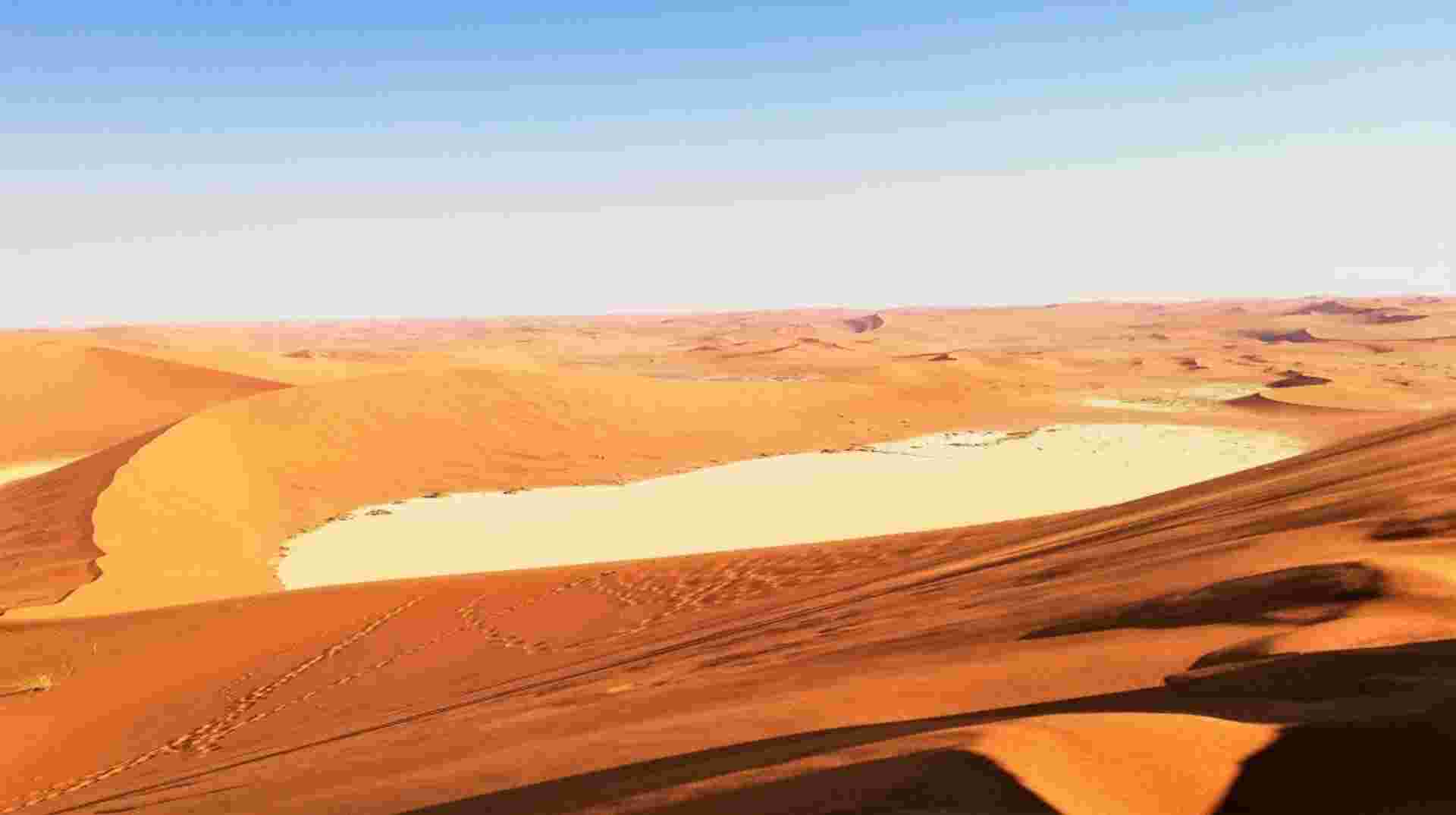
Get Trip Brochure & Exclusive Discount
Download a detailed PDF brochure and unlock an exclusive discount for this tour
What's Included
What's Excluded
Customer Reviews
Read what other travelers have to say about 4 Day Swakopmund & Sossusvlei Adventure
Request a Private, Customizable Departure
By design, this is a group tour. You can however request a private, customized version of this tour for yourself or your private group of people. Private departures are usually more expensive, but come with these benefits:
Itinerary can be tweaked and customized.
Access our Travel Specialists' insider knowledge.
Enjoy a tour focused solely on you or your travel group.
Travel within your own bubble.
Tour Availability
Select your preferred departure date and secure your spot
Loading availability...
Monthly Price Comparison
Good to Know
Do you need help from our trip consultants?
If you have any question about this tour or need help with planning a trip, please do not hesitate to get in touch with us.
Our travel experts are ready to help.
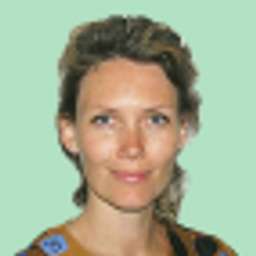

Why Book with Bookmundi
Earn USD 34+ in travel credits.
Best price guaranteed.
No credit card or booking fees.
100% financial protection.
Carbon neutral tours.
25,000+ trip reviews, with an average rating of 4.8 out of 5.


